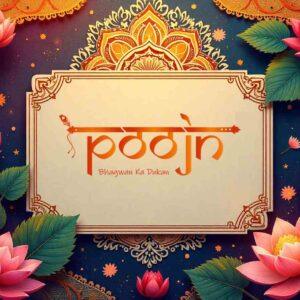

In the heart of Karnataka, in a small village called Halmidi, a discovery was made that would forever change our understanding of our mother tongue, Kannada. Imagine a stone pillar, not just carved with letters, but whispering stories from a time almost 1,500 years ago. This is the Halmidi Inscription (Halmidi Shasana), a true treasure of our culture. It’s more than just an old rock; it’s the very first love letter written in our beautiful language, a proof of our deep-rooted and glorious past.
For anyone who feels a connection to Indian culture and the timeless traditions passed down by our ancestors, the story of this inscription is truly heartwarming. It connects us directly to the Kadamba dynasty and shows us that Kannada was not just a language of the people, but also the language of kings and administration.
The Story of its Discovery: A Treasure Unearthed in Halmidi
It was in 1936 that Dr. M.H. Krishna, a dedicated archaeologist, stumbled upon this priceless artifact in Halmidi village in the Hassan district. You can imagine the excitement of finding something so profound! This wasn’t just another discovery; it was like finding the birth certificate of the Kannada script. The original stone is now safely kept with the Director of Archaeology and Museums in Mysore, with a replica proudly standing in its home village, reminding everyone of its importance.
Dated by scholars to be from around 450 CE to 500 CE, this sandstone pillar stands as a silent witness to a vibrant period in our history. It gives us a peek into the world of our forefathers, their lives, their beliefs, and their governance.
What Does the Halmidi Inscription Actually Say?
So, what story does this ancient stone tell? The inscription, written in sixteen lines, begins with a beautiful invocation in Sanskrit, paying respects to Lord Vishnu – a tradition of seeking divine blessings before any important announcement, a practice we still follow in our pujas today.
This tradition of seeking divine blessings is a beautiful part of our culture that continues in our homes. Bringing a symbol of the Lord’s presence, like the sacred Lord Balaji Charan Paduka with Shanku, can fill your home with that same divine grace our ancestors sought. It’s a way of keeping our traditions alive and vibrant.
The rest of the inscription is in a form of ancient Kannada, called ‘puruvada-hala Kannada’ (pre-old Kannada). It records a gift of land. It tells the heroic tale of a warrior named Vija Arasa, who fought bravely in a battle between the Kadambas and the Kekaya Pallavas. As a reward for his valour, he was granted the villages of Halmidi and Mulivalli. The inscription also mentions that a portion of the revenue was gifted to the Brahmins, showing the societal structure of the time. This tells us that Kannada was a language of official records and administration long, long ago.
Why This Ancient Stone Matters to Us Today
The Halmidi inscription is a pillar of pride for every Kannadiga and every Indian who values our country’s diverse heritage. It is concrete proof of the ancient roots of the Kannada language and its script, which evolved from the Brahmi and Kadamba scripts. It’s a powerful reminder that our languages are not just means of communication, but carriers of culture, history, and identity.
Studying this inscription helps us trace the journey of our language, connecting the dots from our past to our present. It fills our hearts with respect for the scholars and ancestors who preserved this legacy for us.
Your Questions Answered About the Halmidi Shasana
Many of us have questions about this incredible piece of our history, so let’s explore some of them. People often wonder what exactly the Halmidi inscription is. To put it simply, it is celebrated as the oldest known inscription written in the Kannada language. It’s a foundational document for the history of the language.
Another common query is about its location. The Shasana was discovered in Halmidi, a village in Karnataka’s Hassan district, which is how it got its name. Its historical significance is immense because it provides the earliest evidence of Kannada being used for administrative purposes, giving us a window into the governance and culture during the Kadamba dynasty.
Can we read it today? Yes, thanks to the tireless work of epigraphists and linguistic experts, the script has been deciphered. While it requires specialised knowledge of ancient scripts, its message is clear and helps us understand the evolution of Kannada. This single stone contributes immensely to Indian history by showcasing the linguistic richness and administrative sophistication that existed in ancient South India.
For those wishing to see it, while the original is preserved for its safety, replicas are often displayed in museums, allowing everyone to connect with this vital piece of our heritage.
Connecting with Our Heritage Through Poojn.in
Understanding our history through artifacts like the Halmidi inscription is one way to feel connected to our roots. Another powerful way is through the rituals and traditions that have been passed down through generations. At poojn.in, we understand this deep connection. We are here to help you uphold these traditions with authenticity and love.
Whether you are performing a daily puja or preparing for a special festival, having the right, pure items is essential. From sacred idols to puja essentials, every item plays a role in creating a divine atmosphere. For instance, a beautifully crafted Pure Brass Swastik Designed Pooja Thali not only serves a purpose but also enhances the sanctity of your rituals, much like how the carefully carved words on the Halmidi inscription sanctified the royal decree.
We invite you to explore our collection at poojn.in, India’s most trusted cultural goods store, and bring home items that resonate with our shared, beautiful heritage.
A Legacy Carved in Stone
The Halmidi Shasana is not just a relic of the past; it is a living legacy. It is a testament to the resilience and richness of the Kannada language and the culture of Karnataka. It teaches us that our roots are deep, our history is grand, and our heritage is worth celebrating every single day. Let us carry this pride in our hearts and pass on these incredible stories to our children, ensuring that this legacy, carved in stone, remains etched in our minds forever.


